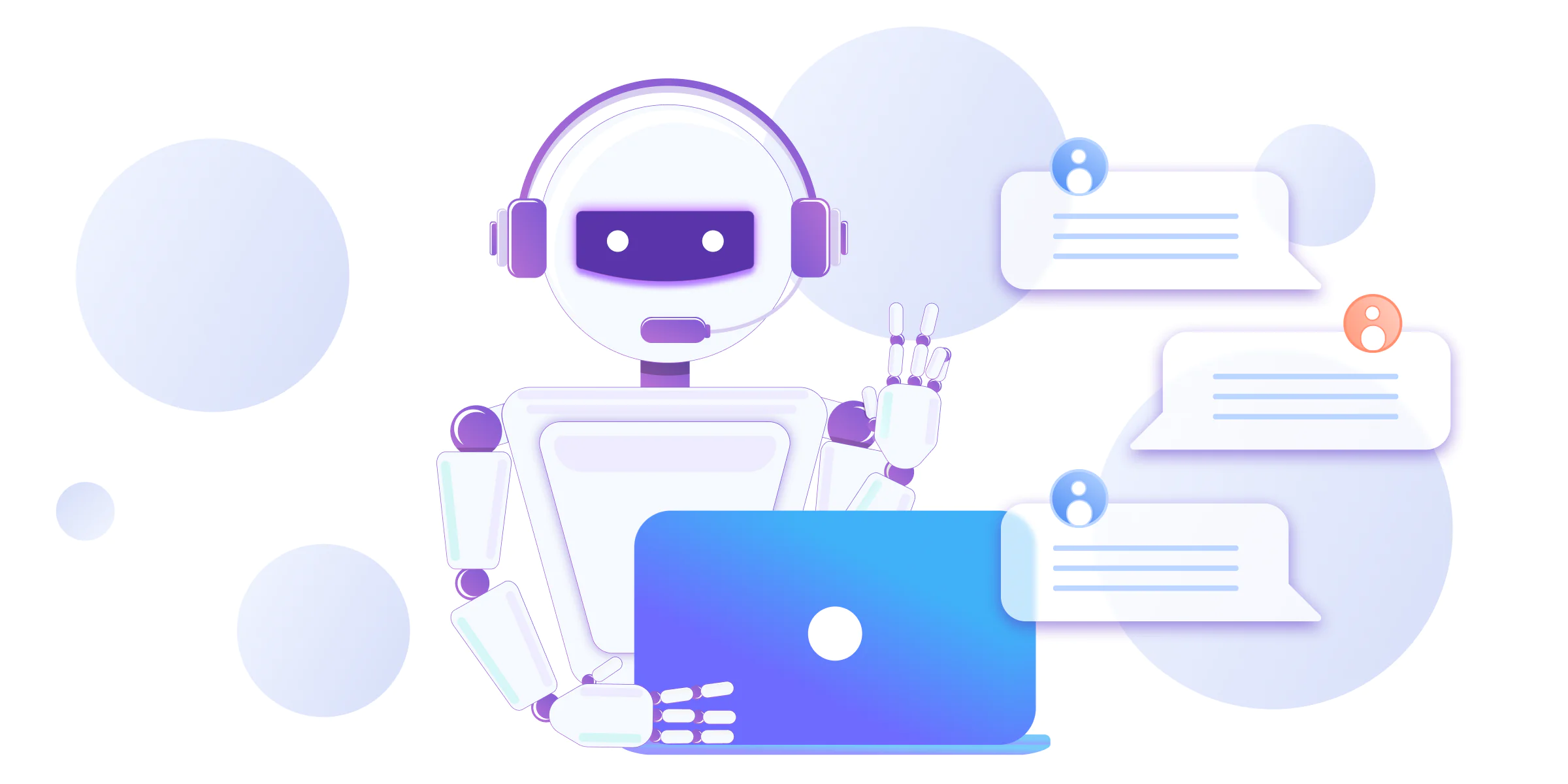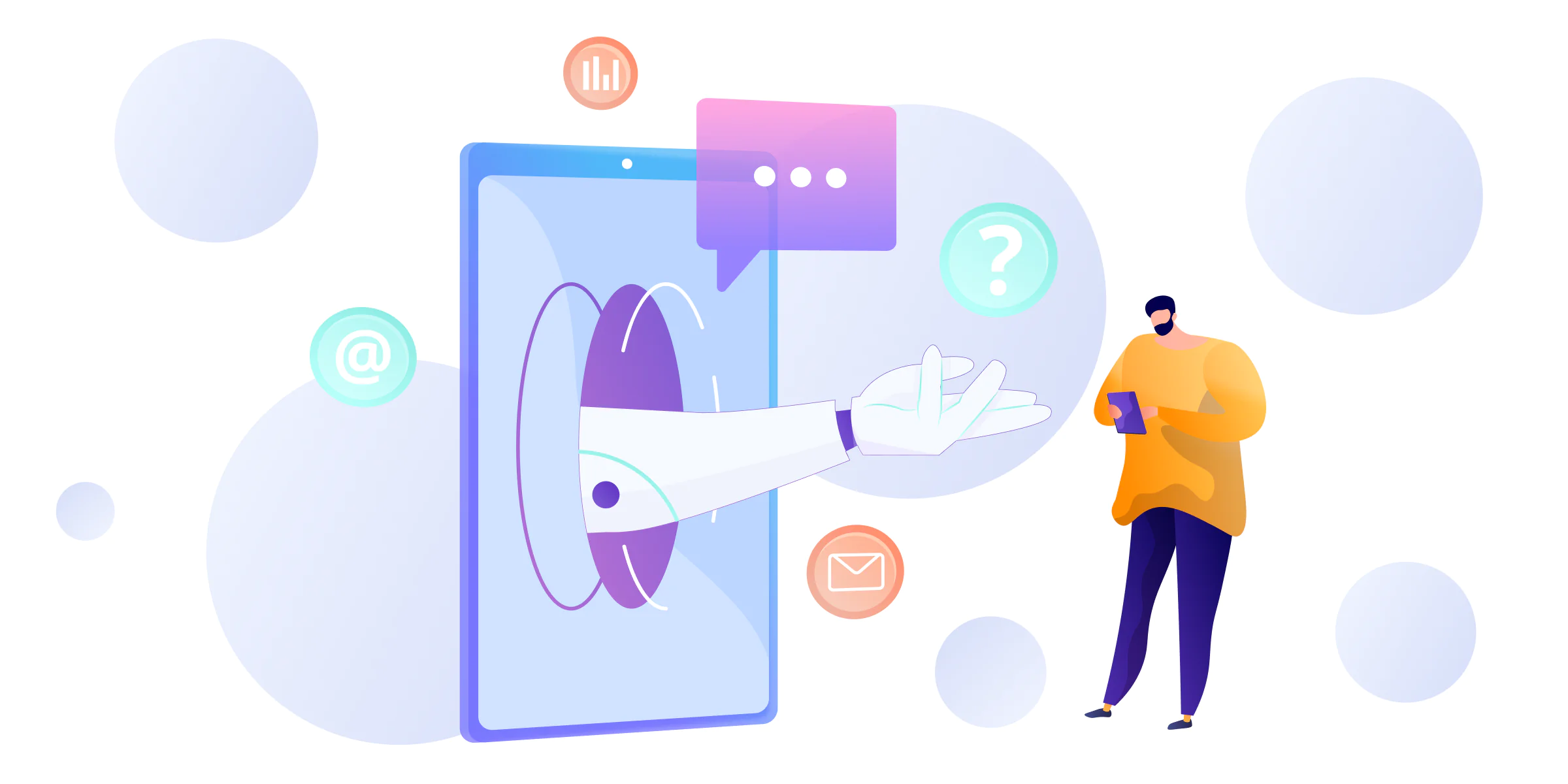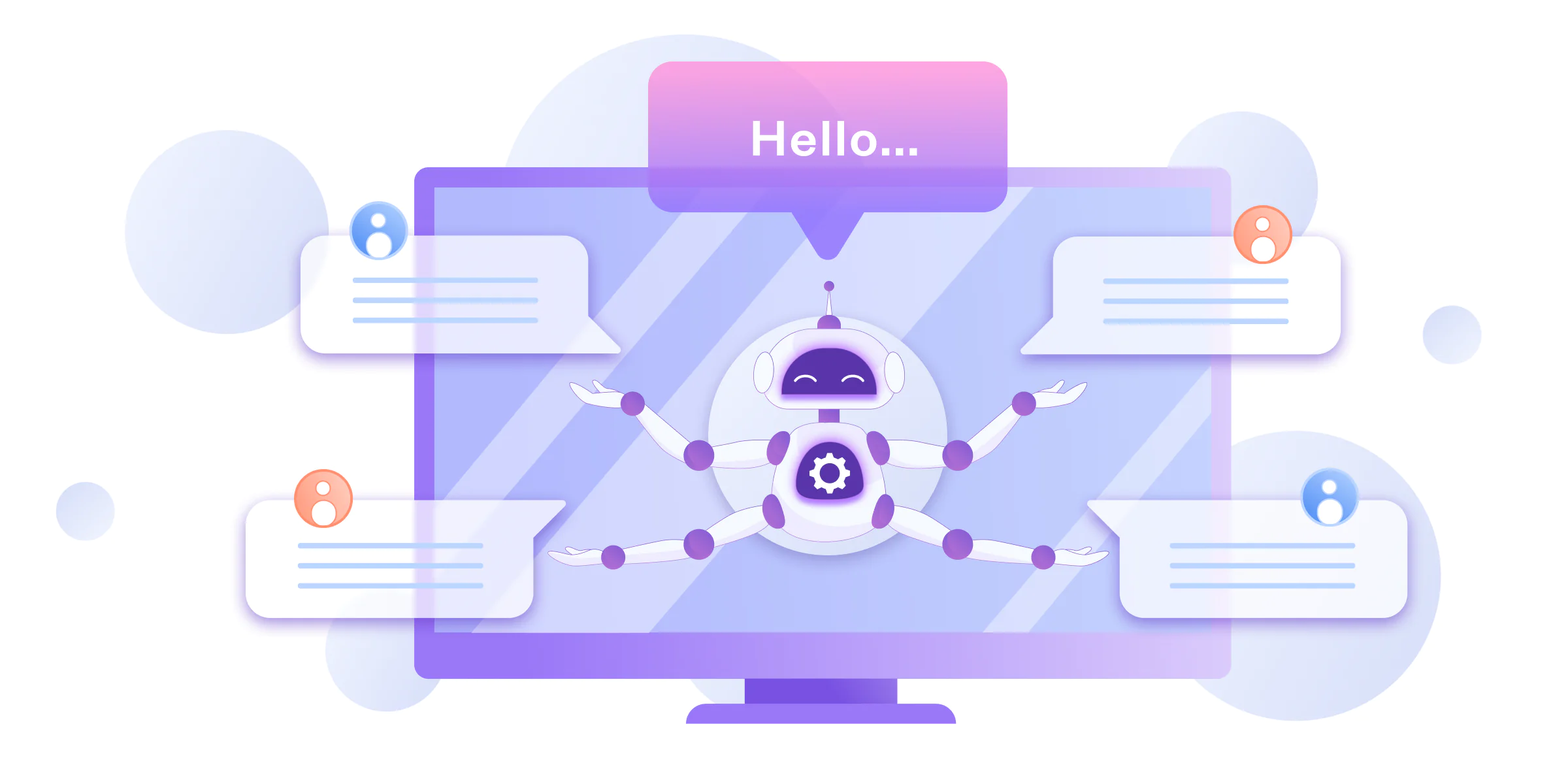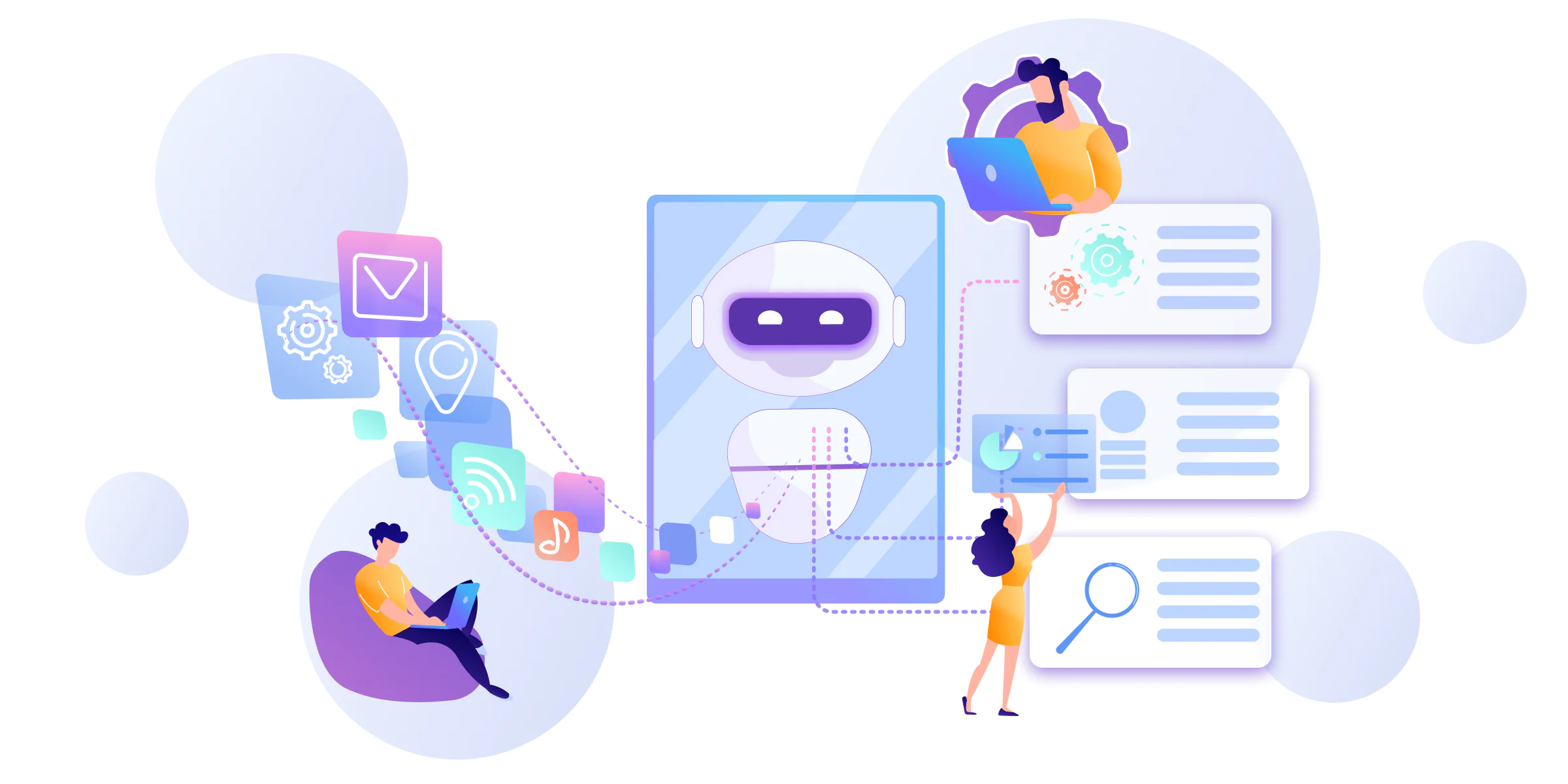Table of contents
Conversational AI is so much a part of our lives now that we take it for granted. In fact, many people won’t even recognize that they are talking to an AI when interacting with customer support. That’s actually an issue that might cause your sales to drop. We’ll discuss the reasons for it and how to avoid this while getting all chatbot benefits.
It’s vital to remember that technology has undergone a fantastic transformation over the past few decades. Understanding the history of its evolution can help make more accurate predictions about the future of AI. It’s also essential information for those who plan their investments for the upcoming years. So whether you think of it as an investor or as a business owner, putting your money on conversational AI is sure to be a win.

History of Conversational AI: First Chatbot Examples
AI technology became a trend only a few years ago. However, the first chatbot was built in 1966. Named ELIZA, this was a rather primitive program compared to our current solutions. Funnily enough, the idea of ELIZA was to simulate a psychotherapist. Its behavior followed the extremely annoying trend of turning every user’s sentence into a question.
Obviously, ELIZA’s ability to communicate was minimal. We assume that the same goes for its proficiency in therapy. However, it was an important step for chatbot technology development.
The next big chatbot project was PARRY, ‘born’ in 1972. This time, conversational AI was simulating a patient suffering from schizophrenia. It performed admirably well as some psychiatrists couldn’t identify it as a machine while ‘talking’ to it. However, PARRY’s actual ‘talking’ ability was also minimal as well.
We can see a trend here. So, when you use a voice assistant or a chatbot support service today, remember that psychiatrists were the first to work with their creation.
From those first attempts, chatbots kept evolving until the rise of the semantic Web 4.0. This technology gave machines the power to understand context, skyrocketing chatbot evolution.
40% of all user interaction with a support service is purely emotional, so your chatbot must be capable of ’emotion’ as well
Can Users Tell a Conversational AI from a Human?
Today, conversational AI chatbots are highly advanced and can emulate human interaction well because of sentiment analysis technology. It’s a recent development, and that’s why conversational AI has made several giant leaps in recent years.
To get some idea of how important this is, you should consider that about 40% of all user interaction with a support service is purely emotional. Chatbots based on repetition couldn’t provide valuable interaction in these situations. However, machine learning and NLP changed this. Now, a chatbot in customer service is capable of identifying and processing emotions and sentiments from the user’s request. Moreover, it’s capable of replying with a degree of simulated emotion. That’s what makes conversational AI appear human.
We must mention, however, that our ability to understand whether we communicate with a human or a machine is limited. For example, the PARRY mentioned above, which was a non-advanced system that didn’t even rely on self-studying AI, could fool certified experts. Five psychiatrists interviewed the chatbot in 1979 using teletype to hide the fact that it was a machine. They were supposed to determine whether it was an AI or a real person with a psychiatric disorder. Only one expert could clearly determine the difference between an AI and a real patient.
Imagine how much harder it would be now, when every AI-powered chatbot in customer service learns and improves with every interaction.

Business Impact of Disclosed and Undisclosed Chatbots
The role of conversational AI chatbots has entirely changed with their integration into popular messaging systems. Many brands launched their chatbots to offer services through such platforms. So, today most people interact with some type of AI-powered support through:
- Telegram
- Viber
- Facebook Messenger
As you know already, conversational AI has been developing to mimic emotional human interaction. Therefore, it’s become hard for people to notice who exactly they are communicating with. Of course, some chatbot services explicitly state they are exactly that. So there is no confusion on the user’s part.
Meanwhile, there are undisclosed conversational AI chatbots. They can achieve fantastic results, especially in sales. Presumably, a chatbot can achieve the level of a specialized shopping assistant. Therefore, it can help retailers increase the number of conversions by providing more personalized top-quality service.
However, should the consumer find out they’ve been interacting with conversational AI during the process, they get upset. As a result, they buy fewer products and might even switch to a different brand.
Apparently, studies indicate that humans consider chatbots to be limited and more ‘primitive’. Therefore, when interacting with disclosed conversational AI chatbots, they use very simple language. Oftentimes, users will bring down the level of their vocabulary when interacting with a program due to their desire ‘to make the machine understand’.
However, humans don’t always do this because they think machines are too primitive to understand human language. The main driving force for this behavior is our understanding that machines are incapable of empathy. At least for the moment, it’s a complete truth. No matter how advanced conversational AI is, it will only mimic human emotion during the conversation.

Is Conversational AI ‘Alive’?
Semantic Web 4.0-level technology can identify and interpret human emotion (to some degree) when processing data. Therefore, conversational AI chatbots are capable of interacting with humans more efficiently and appear more alive. So, it’s harder for users to understand if they are dealing with a human or chatbot in customer service. In fact, chatbot help turns out to be about four times more efficient.
However, humans are creatures prone to bias. Thus, as long as we are stuck believing that machines are incapable of understanding and projecting emotion, we will be uncomfortable with them doing it.
As you can see, issues discussed in science fiction novels decades ago have become our reality today. AI chatbots aren’t ‘alive’, but they learned how to mimic humans better. Combined with the outstanding processing power of artificial intelligence, we can expect this technology to become even more helpful and ‘human-like’ soon.
A chatbot is FOUR times more efficient in customer support.
Conversational AI Chatbots Vs. Assistants
Advancements in conversational AI technology mean that its applications are growing. Similar to how computer vision tech goes into everything from self-driving car navigation to facial recognition software, conversational AI helps create different programs.
Of course, the most numerous are AI chatbots, which provide various support and educational services. However, today this technology has become a big part of the rapidly-developing AI-powered virtual assistants industry. Leaders among them are:
- Siri (Apple)
- Cortana (Microsoft)
- Google Assistant
- Alexa (Amazon)
- Watson (IBM Cloud)
The difference between conversational AI chatbots and assistants is that while both are conversational interfaces, they fulfill different roles. A chatbot in customer service will answer questions and offer suggestions based on preset parameters. This type of software follows the same pattern when used in education as well. Basically, it’s a machine that provides information based on a prompt from the user.
Meanwhile, virtual AI-powered assistants help you with everyday tasks. Their features are versatile, for example, reminders, to-do list management, search assistance, note-taking, etc. In essence, this solution is your personal secretary. In addition, these assistants can be connected to smart devices and integrated into your IoT network. So, you might be able to manage most of your house through voice commands and your smartphone. That voice command feature is powered by a version of conversational AI.
Although they apply this technology differently, chatbots and virtual assistants run on the same principles of AI tech. Moreover, we can expect both these branches of conversational AI to keep growing at an astounding pace.

Bottom Line: Who Needs Conversational AI Products Today?
To put it simply, every business, both big and small, can benefit from implementing AI chatbots in some processes. They are good for automating routine tasks, like basic consultations and surveys. You can also use them to provide higher-quality customer support. It can be a huge advantage for small businesses, in particular.
Moreover, you can use bots powered by conversational AI for education and onboarding. Therefore, big companies can implement them to increase the productivity and efficiency of their overall operations.
There is no shortage of conversational AI chatbots applications, so you should definitely consider adding them to your business arsenal. Contact the Devtorium AI team to learn how this technology can benefit your business. We can build chatbots from scratch to ensure that the solution is custom-tailored to your needs and can grow and scale up alongside your company.




